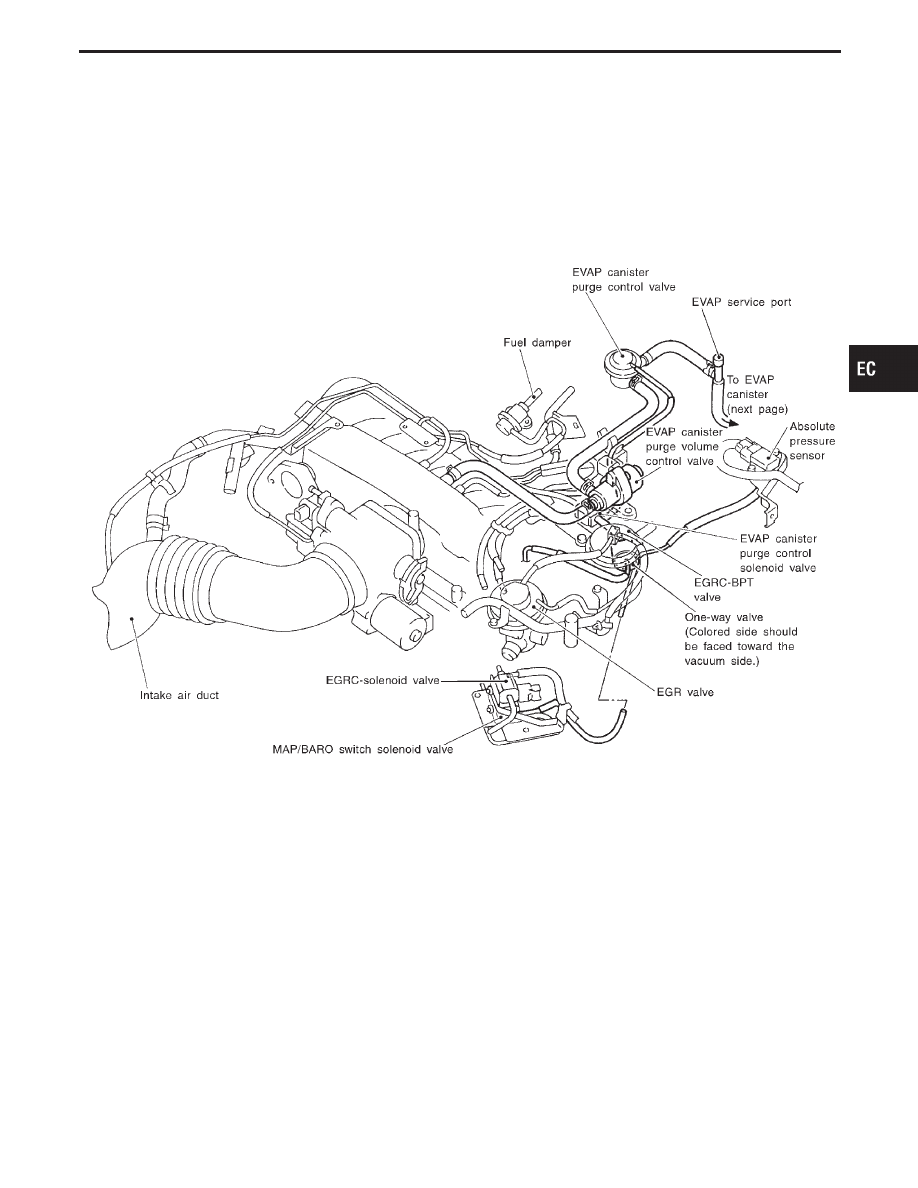Infiniti Q45 (FY33). Manual - part 125

Evaporative Emission Line Drawing
SEF211U
Note: Do not use soapy water or any type of solvent while installing vacuum hoses or purge hoses.
GI
MA
EM
LC
FE
AT
PD
FA
RA
BR
ST
RS
BT
HA
EL
IDX
EVAPORATIVE EMISSION SYSTEM
EC-29